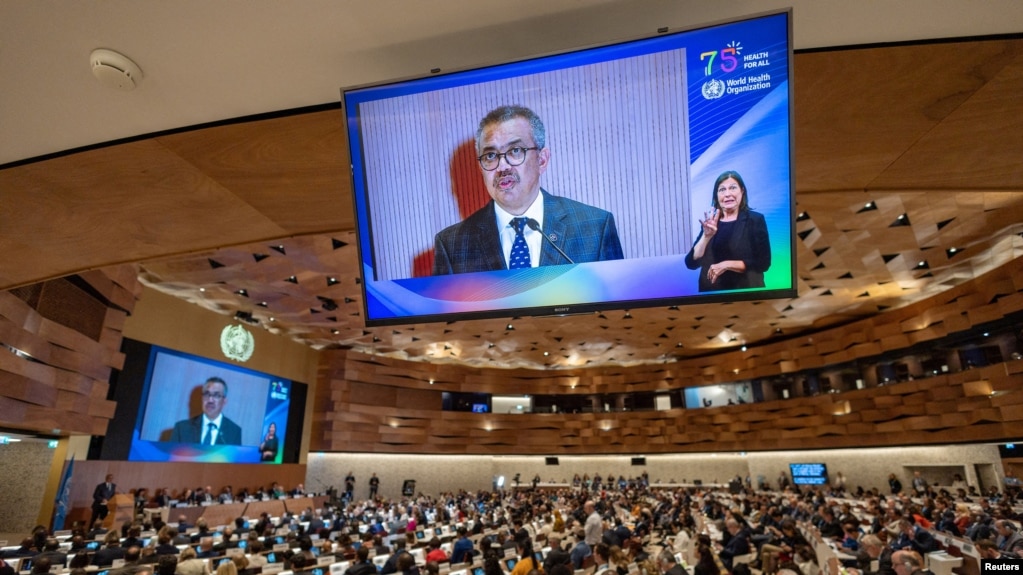How WHO Could Deal with Future Pandemics

Officials at the World Health Organization (WHO) are negotiating new rules for dealing with pandemics.
The U.N. health agency's 194 member countries have set a target date of May 2024 for a legal agreement.
A new agreement is a top goal for WHO chief Tedros Adhanom Ghebreyesus. He called it a "generational commitment that we will not go back to the old cycle of panic" at the U.N. agency's yearly meeting.
The agreement seeks to improve the world's defenses against new viruses. The effort follows the worldwide spread of COVID-19, which is blamed for killing nearly 7 million people.
What is the so-called pandemic treaty?
The WHO already has rules known as the International Health Regulations, passed in 2005. The rules explain countries’ responsibilities when diseases and other public health events threaten to cross borders. WHO members approved the rules after the SARS outbreak in 2002 to 2003.
These rules are still considered good enough for local epidemics, like Ebola, but not for a pandemic. The rules are also being reconsidered after COVID-19.
Member nations have agreed that the new agreement should have legal force like a treaty does.
It would be only the second such health agreement after the 2003 Framework Convention on Tobacco Control. That treaty aims to reduce smoking through taxation and rules on labeling and advertising.
However, critics have voiced their opposition to the proposed treaty on social media. Opponents say approval could lead countries to give too much power to the WHO. The WHO says governments are leading the negotiations and are free to reject the agreement.
Who supports the agreement?
The European Union proposed the agreement. The EU is considered its biggest supporter. Developing countries, especially in Africa, hope to use the negotiations to secure vaccines.
After five rounds of negotiations, the latest version of the treaty still includes thousands of areas of disagreement or undecided wording. There is even disagreement over the definition of the word "pandemic." With so many member countries involved, getting agreement is likely to be difficult.
How would it work?
It is not yet clear how the 2005 rules and the new pandemic agreement might work together.
Some think that existing rules should continue to apply to local outbreaks with the new rules applying if the WHO declares a pandemic. But the WHO does not have the power to declare a pandemic.
It is also not yet clear what happens if required measures are not followed.
What other changes are possible?
Separate talks on changing the 2005 rules are also taking place. Countries are proposing about 300 amendments to the rules.
The first proposals from the United States aimed to increase transparency and permit the WHO to go more quickly to places where disease outbreaks are taking place.
After a delay of about one year, China did permit WHO-led expert teams to visit the suspected COVID-19 starting point in Wuhan. But the WHO says China is still refusing to release information from early cases that may hold information about the beginnings of COVID-19.
Words in This Story
commitment — n. a promise to do something
cycle — n. actions or events that repeatedly happen
panic — n. a state of being seized with fear
label — n. information placed on products that explains the product, what is in it and why someone should buy it
transparency — n. a condition of being open and easy to understand
https://learningenglish.voanews.com/a/how-the-who-could-deal-with-future-pandemics/7107140.html